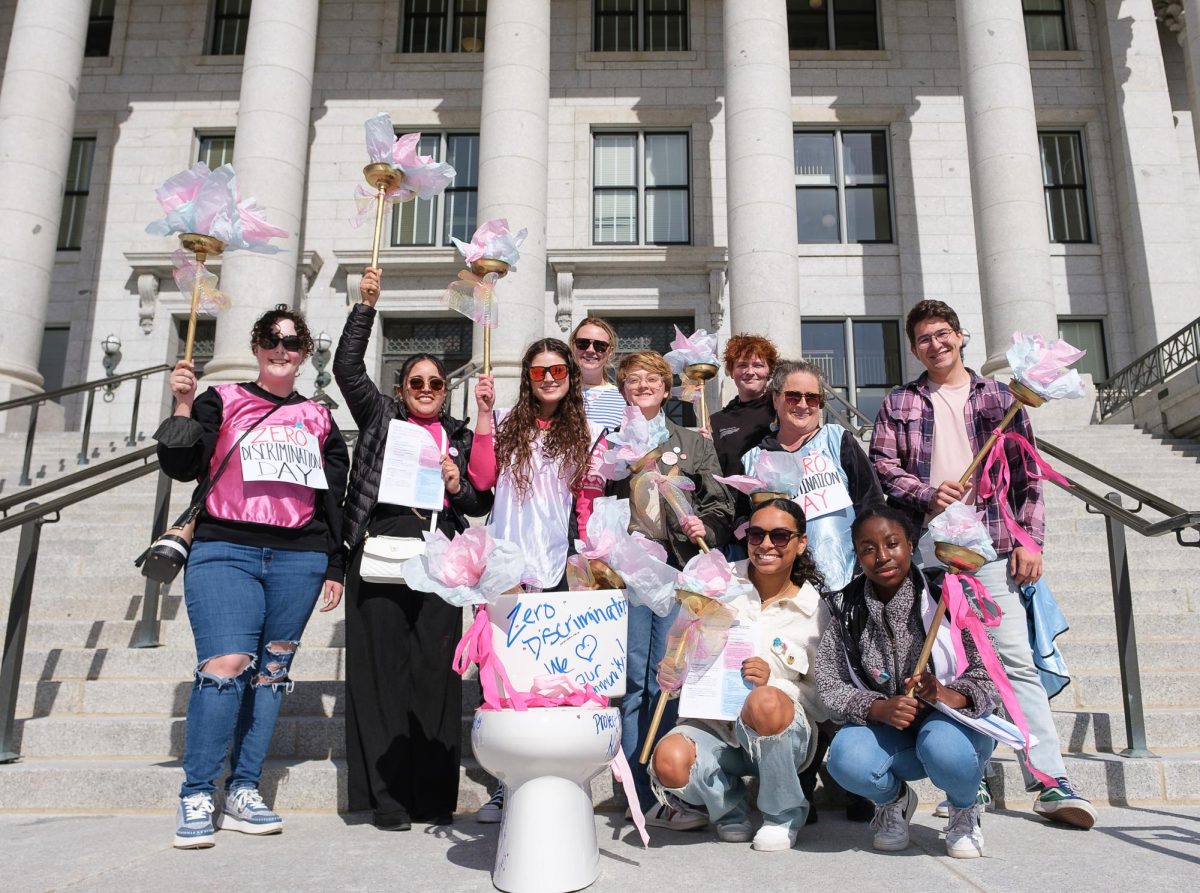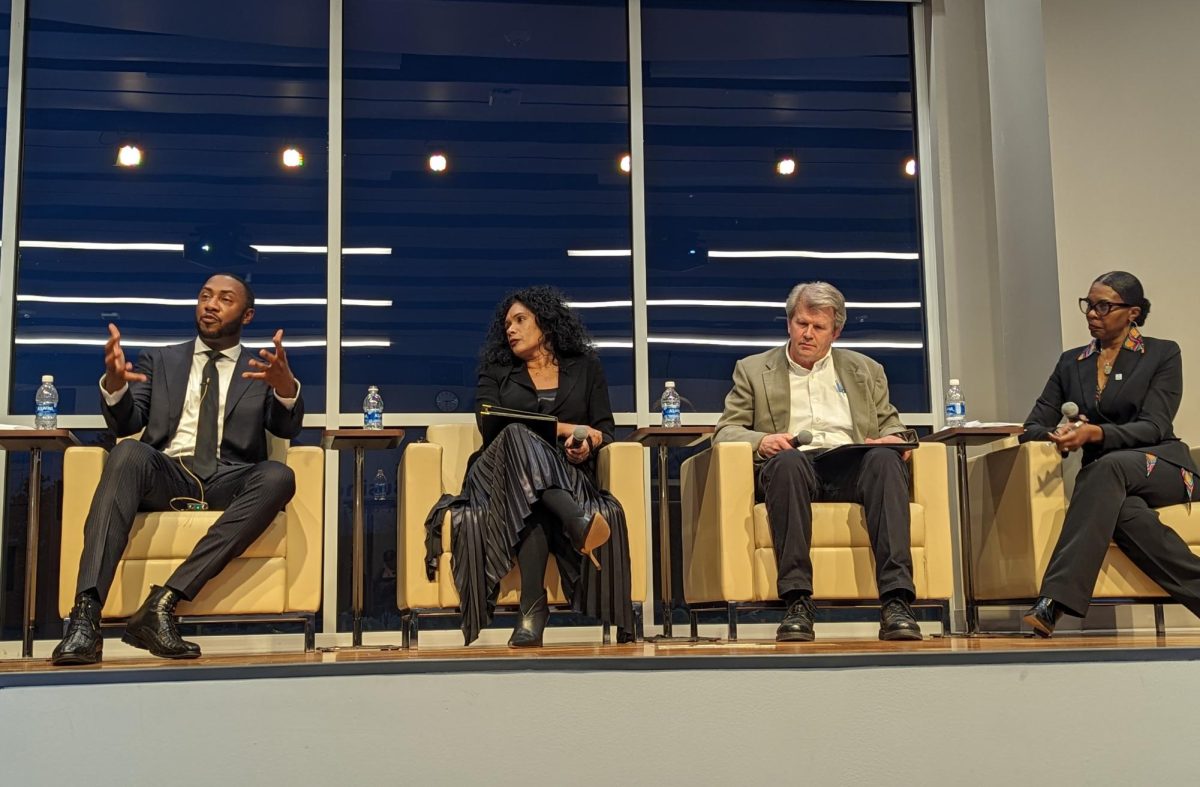
After 371 boxes of documents and more than 170,000 microfilm sheets of evidence, all Pamela Branum got was an apology.
Branum, a San Antonio resident , is “disappointed” by the response from the U. She had hoped for a little more from the U’s investigation after a discrepancy resulted in a convicted felon becoming the biological father of her child.
She began using a clinic, which she knew as the University of Utah Fertility Clinic, in 1990 with her husband John. The couple were having trouble conceiving.
But two years later it seemed their luck had changed. They had their daughter Annie in May of 1992. Annie was supposed to be conceived through John’s sperm, but Thomas Lippert, an employee of the clinic, replaced the sample with his own sperm. And the U is unsure whether the swap was intentional or accidental.
Branum discovered this switch 21 years later when she was studying her family’s genealogy. She thought it would be fun to have her daughter and husband’s DNA tested with 23andMe, a major genealogical database. When she received the results in the mail, however, Annie showed a zero percent correlation with her father.
She had Annie tested with another DNA database that found a match with Lippert’s first cousin. They pieced together the puzzle and reported the incident to the U in April 2013.
“What happened to us was wrong, and we’re still concerned that [Lippert] did it to other people, but balancing that out, we have a beautiful daughter and we love her so much,” Branum said.
The U’s analysis, performed internally by three of the university’s physicians and Alta Charo , a medical ethicist from the University of Wisconsin, began in January/February of 2014 and took about 90 days to complete.
Christopher Nelson, assistant vice president of public affairs with the U’s health sciences, said the study was a “tricky scenario” and “the university stands by the way it handled everything.” He said there has been some disapproval of the U’s investigation because it was done within the university.
“I think that’s a fair thing to point out,” Nelson said. “[But] as you see in the report itself, the theme is not complementary toward the university. We point out a number of failings the university had back in that era.”
The analysis found that two clinics, Reproduction Medical Technologies, Inc. and the University of Utah 3900 South Community Laboratory, both defunct, were owned and shared by U employees and were, in some regards, indistinguishable. The clinics split office spaces and were “basically the same thing,” Nelson said.
The investigation states Lippert worked at both of the fertility clinics as a laboratory technician from August 1988 to July 1993, maybe 1994 at the latest; reports indicate he was an “effective” employee. Others, such as Lippert’s widow Jean Lippert, said he worked there between 1986 and 1995.
Ronald Urry, the founder of RMTI and a former professor at the U, died in 1997. His wife, Pam Urry, destroyed RMTI’s records sometime between 2005 and 2007. Nelson said the destruction is “unfortunate” but not “nefarious.” Once dissolved, he said, a company is required by law to hold on to records for about 10 years, and after that they can dispose of them legally.
“It’s not as though they were destroyed as part of a cover-up,” he said. “I don’t think anyone thought they would need to get the records again.”
He said the lack of records made discovering information on the privately owned RMTI facility difficult. Most records from the university’s clinic were kept in boxes and on microfilm but, according to the analysis, are unorganized and “lack meaningful indexing by date or by name.”
The investigation also found Lippert was not only an employee of the clinic but was also a “frequent” sperm donor between 1983 and 1993 for both local and national couples. Branum said this is “the most surprising” part of the study.
The finding also complicates the investigation. It means that while the Branums received Lippert’s sperm by mistake, other couples elected to receive his donation by choice.
Branum wants the U to inform all patients at the clinic during Lippert’s employment of the incident, around 1,500 people, but the U said it would be unethical and might cause “more harm” because of the complications.
“You can imagine there’s a lot of complicated scenarios out there,” Nelson said.
The U’s current andrology lab has tested five individuals related to the Lippert findings. None of the five show any match to Lippert. They did, however, discover a second laboratory error.
A mother at the fertility clinic during the time of Lippert’s employment selected to have the same donor for both of her children. She had a daughter with the correct donor and returned to the clinic years later for artificial insemination for a second child. However, her next child, a son, shares DNA with a different donor than the one she had selected. She tested at the U’s lab after hearing of Lippert’s indiscretion because her children do not look alike. Nelson said this case is “a whole other terrible.”
The U’s report states each semen sample at RMTI and the university’s community lab was color-coded and labeled to avoid accidental mix-ups. The analysis said “an accidental switch would represent a serious breakdown in laboratory procedures that are designed to maintain quality of the samples and to prevent exactly this type of error.”
Another possible consequence of the alleged sperm swaps is half siblings forming relationships in the Salt Lake City community. Any reproduction among these couples could be a “significant risk,” according to the U’s investigation. Branum finds this extremely distressing.
“I know [Annie]’s got half brothers and sisters out there, and I think they’ll come forward once they find out,” she said.
The investigation’s review panel suggested that the university continue to offer paternity testing for those potentially afflicted by Lippert’s alleged misconduct. They said a “reasonable” time to offer this service is for one to two years to come. Those concerned about being affected by the transgression should call (801) 587-5852 to speak to the andrology lab.
Branum said some couples have contacted her after speaking with the U’s lab relaying that the university made the process of DNA testing difficult and asked what she felt were inappropriate questions. But Nelson said they are doing everything possible to help, reassure and guide those impacted.
Nelson said the U has also reformed medical procedures since the incident in the early 1990s. They no longer manage anonymous sperm donations. And while Lippert did not receive a background check before his hire, the university has required background checks for all health care employees since the early 2000s.
“In today’s world, Thomas Lippert wouldn’t have been hired by the university … the processes that lab was following wouldn’t hold up to our quality standards,” Nelson said. “It’s an unfortunate part of the university’s history, but something we’ve got to move on from.”
Lippert’s story is further clouded by his previous criminal activity. In 1975 Lippert pled guilty to charges of kidnapping a female student from Purdue University in February. He worked as an assistant professor of business law at Southwest Minnesota State University at the time of the incident.
He allegedly subjected the young woman to his “love experiment,” which included electric shocks targeted to make her love him. He denied the incident when he married his wife Jean. In 1999, Lippert died of cirrhosis of the liver due to his apparent alcoholism.
Branum said Lippert’s criminal history and the potential for more afflicted couples to hear about the sperm swap means the case will never be closed. She feels her official apology from the U may not be the only one they issue.
“We feel like this will continue to be an ongoing story as more people come forward in the months and years ahead,” Branum said. “This isn’t the end of the story.”
Write for Us
Want your voice to be heard? Submit a letter to the editor, send us an op-ed pitch or check out our open positions for the chance to be published by the Daily Utah Chronicle.
@TheChrony
Print Issues
Write for Us
Want your voice to be heard? Submit a letter to the editor, send us an op-ed pitch or check out our open positions for the chance to be published by the Daily Utah Chronicle.
@TheChrony
Print Issues
U issues official apology for Lippert sperm scandal

Thomas Lippert. Photo courtesy of yourgeneticgenealogist.com
May 28, 2014
Leave a Comment















